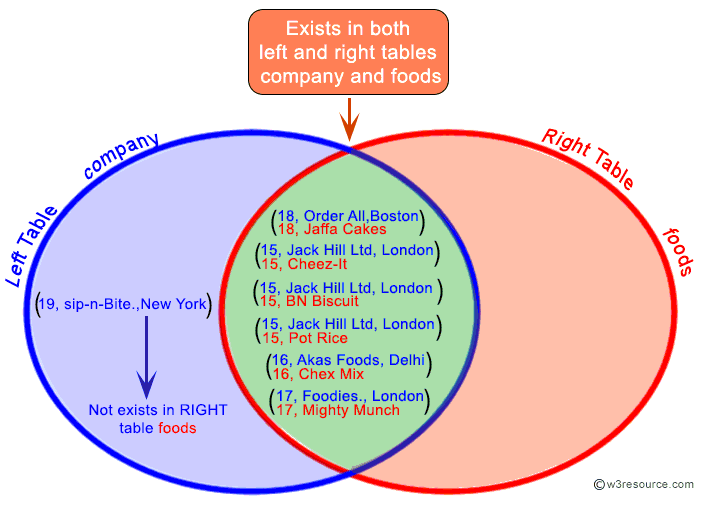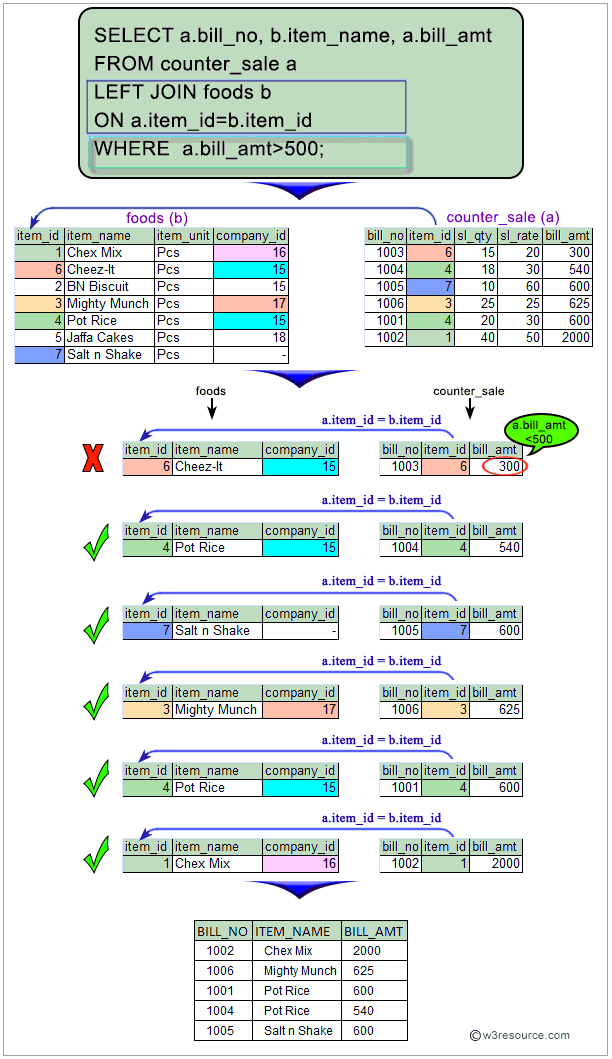
Query SQL Data into Stunning Reports. Get Your Free Trial Today. Connecting With The Data Community. Move Forward With Confidence. Watch the Free Tableau Video Demo!

The result is NULL from the right side, if there is no match. SELECT column_name (s) FROM table1. This means that a left join returns all. LEFT JOIN tableON table1. The condition that follows the ON keyword is called the join condition B. Let’s take a look at the countries and locations tables.
Each location belongs to one and only one country while each country can have zero or more locations. Id ORDER BY TotalAmount This will list all customers, whether they placed any order or not. See the sections on joins for more details on each of the join expressions. PROC SQL joins do not require that common variable have the same name in the data sets you are joining, while you need to have common variable name listed in BY option when using MERGE statement.
The subquery on the left join has the same alias bsr. Remove that alias in the inside subquery and I think that will fix it. Multiple left joins on multiple tables in. Mint tudjuk, sokkal természetesebb a feltételt tartalmazó összekapcsolás.
The rows for which there is no matching row on right side, the result-set will contain null. Basic SQL Join Types There are four basic types of SQL joins: inner, left , right, and full. The easiest and most intuitive way to explain the difference between these four types is by using a Venn diagram, which shows all possible logical relations between data sets. In other words it returns all the matching rows from both the tables and non matching rows from left table. Let’s assume that you are going to query data from two tables tand t2.
Record fieldVal abc NULL. The full join means all rows from both tables are merged on id giving full list, you do need the coalesce to get id populate as if you just take first table then it would be missing for those which appear only in second table. The SQL Left Join is a SQL Join Type used to return all the rows or records present in the Left table and matching rows from the right table. Let us see the visual representation of the SQL Server Left Outer join for better understanding.
SQL provides many kinds of joins such as inner join , left join , right join , full outer join , etc. This tutorial focuses on the inner join. The inner join clause links two (or more) tables by a relationship between two columns.

Whenever you use the inner join clause, you normally think about the intersection. Left join tries to add NULL-valued parts for right table when corresponding record(s) not exists. WHERE ejects all of them. The intersection is the rows in the A table. A left outer join gives us the rows in the left hand table whether there is a match or not with the rows in the right hand table.
If there is a match, get get that second tables requested rows as well.
Nincsenek megjegyzések:
Megjegyzés küldése
Megjegyzés: Megjegyzéseket csak a blog tagjai írhatnak a blogba.